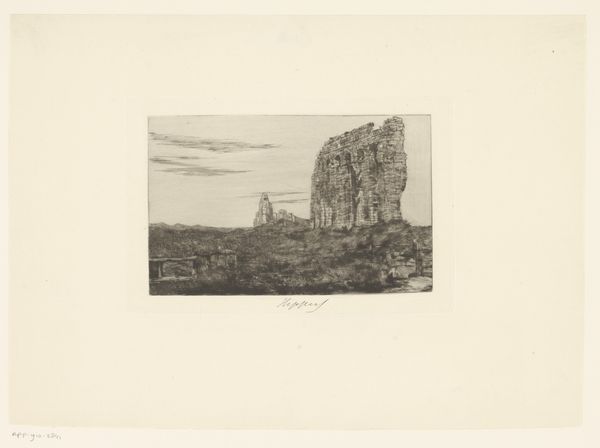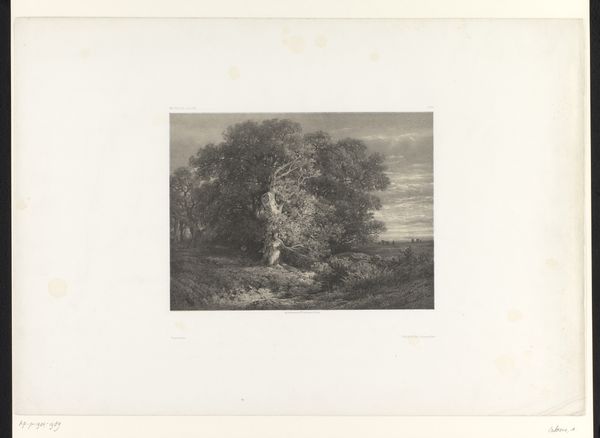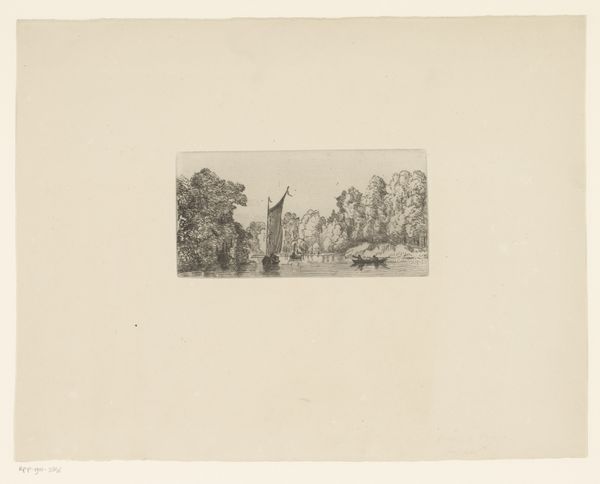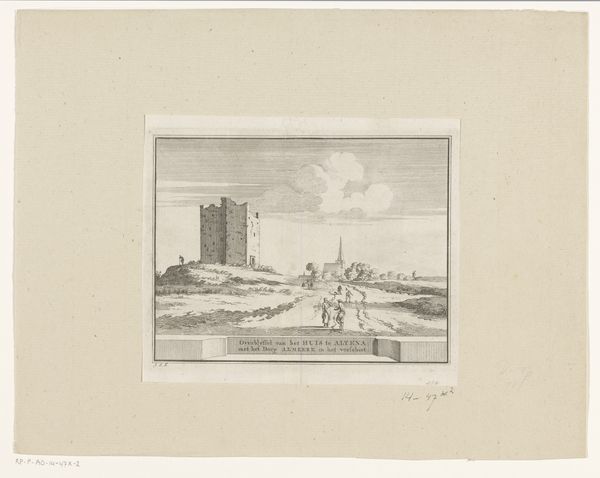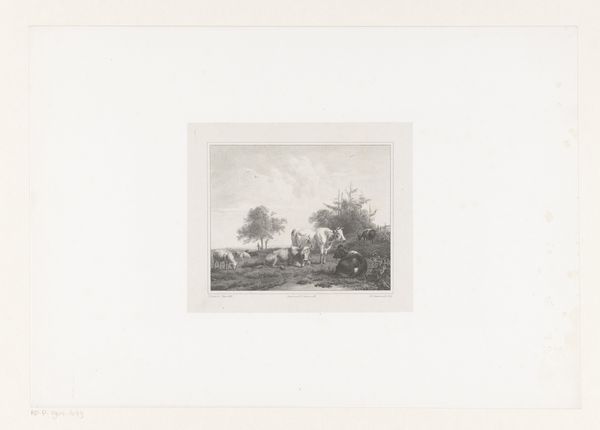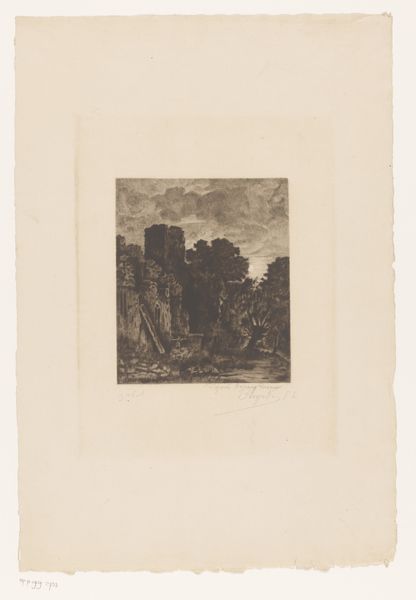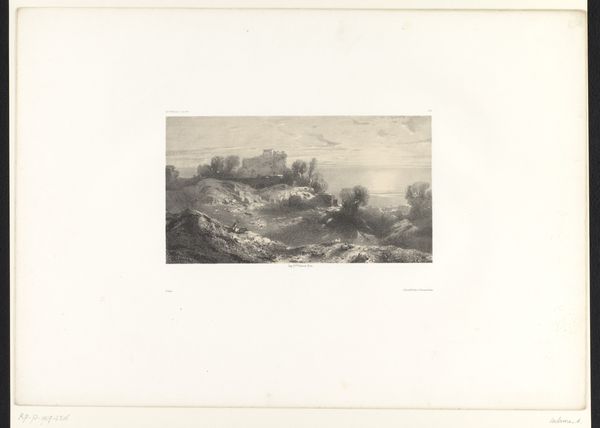
Dimensions: height 152 mm, width 220 mm
Copyright: Rijks Museum: Open Domain
Auguste Numans created this landscape with ruins as an etching. Numans lived in an era marked by significant social and political change, particularly regarding national identity and the rise of Romanticism, which prized emotional intensity, the beauty of nature, and the power of the sublime. It is hard not to read ruins as more than just stone. Ruins elicit a sense of the past, and, importantly, they represent loss and decay. Note how the foliage creeps up and around the tower as though nature is in the process of reclaiming what was once 'ours'. They can be interpreted as symbols of time's passage and reminders of human mortality, of both personal and collective pasts. While ruins may stand for what is lost, they may also suggest the possibility of renewal. Numans invites us to contemplate the cyclical nature of time and the enduring presence of history in the landscape. It's a space for reflection, inviting you to consider the stories embedded within the stones.
Comments
No comments
Be the first to comment and join the conversation on the ultimate creative platform.

